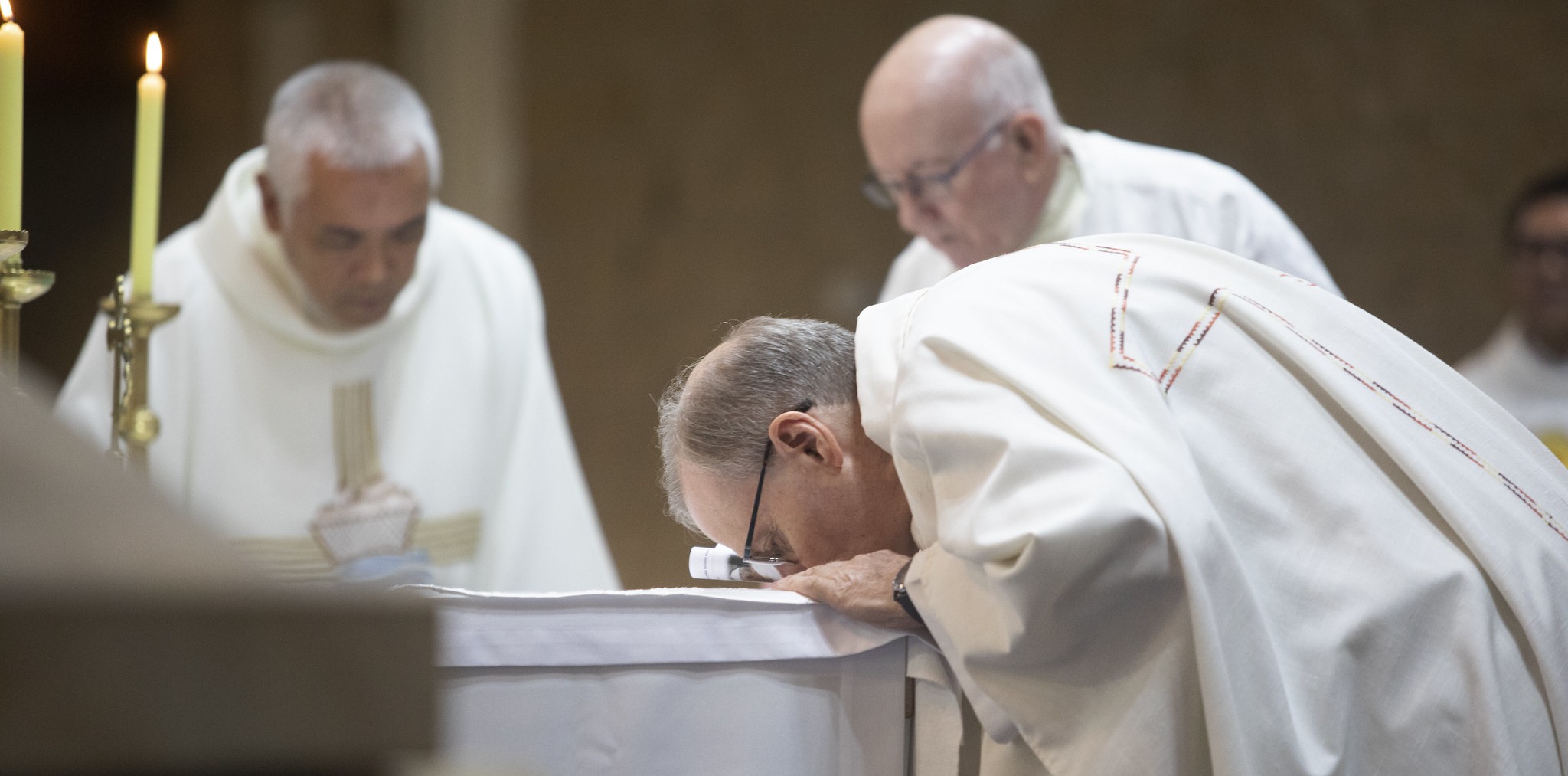The Sign of the Cross, Greeting and Penitential ACT
National Liturgical Council

Sign of the Cross
Having sung the Entrance Song, we now make the Sign of the Cross – the sign at the very heart of our faith.
This sign was first made on us by the Church at our Baptism when we were claimed for Christ. Now we make that same sign on ourselves. When we bless ourselves with holy water as we come into the church we are also recalling our Baptism.
Our children should be taught to make this sign from an early age, both at home and at church. They should copy their parents and when old enough, be told why we sign ourselves at the start of every Mass.
The practice of making the Sign of the Cross apparently goes back to the second century. It was used at many points during the celebration of the sacraments, but signing at the beginning of Mass only came into practice in medieval times.
The Greeting
The greeting is among the oldest of the Introductory Rites. There are three forms that the priest can use and all of them come straight out of the scriptures.
The oldest of them, “The Lord be with you”, is in the book of Ruth 2:4. Our response, “And also with you”, is found in a number of places in St Paul’s writings.
The two other forms of greetings can be found in Corinthians 13:13 and Galatians 1:3 respectively.
This opening greeting is therefore more than a simple ‘hello’ or a goodwill gesture. It reminds us again of our baptismal dignity, of the role of the ordained presider, and of God’s presence with us.
Beginning with an informal greeting in a liturgical setting can weaken the sense of a sacred people preparing to participate in a sacred ritual. It can also tend to put the focus on the person of the priest rather than the liturgy.
An optional introduction by the presider may be made after the greeting, although there is no written evidence that this was done in the early church. In parishes where commentators are still used every Sunday, there are often two lots of introductory remarks – one by the commentator and the other by the priest.
Try to avoid ‘verbal overload’, in this instance. The Introductory Rites are meant to be brief. One set of introductory comments is plenty. Remember the classic principle: less is more!
Penitential Act
This was not part of the Roman Mass for many centuries since the whole of the Eucharist was understood as being a reconciling sacrament. By acknowledging our sinfulness, however, we are proclaiming our faith in a God who is kind and forgiving, and the source of all reconciliation and healing.
Today we have three forms of the Penitential Rite from which to choose. The form in which the people respond: “Lord have mercy, Christ have mercy, Lord have mercy”, is in fact a Litany of Praise. It may be sung rather than said. This might be especially appropriate during Lent and Advent.
The Rite of Blessing and Sprinkling Holy Water
A Sprinkling Rite may replace the Penitential Rite. This rite is another reminder of our baptism into the death and resurrection of Christ.
Every Sunday in fact celebrates the Easter event. However, the Sprinkling Rite might be best used when our baptism into the risen Lord has a special focus, like the occasion of baptising infants at Sunday Mass, the celebration of Confirmation and first Eucharist, funeral liturgies and of course, during the seven weeks of Easter and including Pentecost.
This article was originally published in Let’s Walk Through The Mass. © Diocese of Parramatta. 1999, 2000, 2007. Reprinted with permission.
